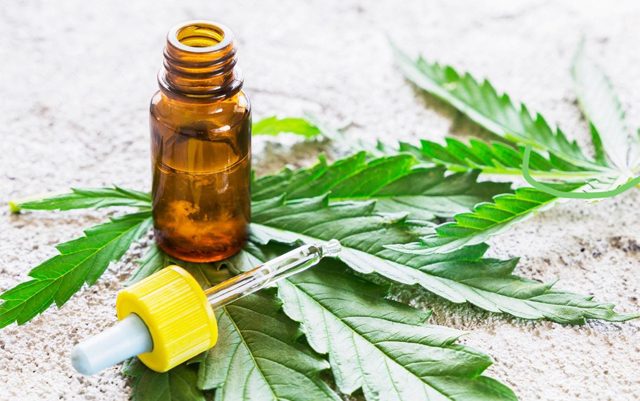CBD sales topped $5 billion last year. More Americans are curious about trying CBD products and seeing if it can help them manage symptoms or live a healthier lifestyle.
The booming market has made finding CBD products easier than ever. It’s also introduced its share of challenges though. There are so many products and online shops, you might feel overwhelmed.
If you’re thinking about buying CBD online, you probably have plenty of questions and concerns. These eight tips can help you get started buying CBD safely.
1. Look for Lab Test Results
The first thing you should do when researching any CBD product or manufacturer is look for lab results. Sellers may not post results, but you should be able to search the brand or product to discover the results.
Keep in mind that some sellers have white label CBD products. They should still post the lab results from the producer making the products.
Third-party lab testing is important. These results can tell you what is in your CBD. The test results also offer insights into residual solvents, microbials, and other factors.
The results should also report on other cannabinoids in the product. Any producer worth their salt should make their lab test results freely available.
2. Take a Look at Customer Reviews
Online customer reviews can help you determine the quality of a product or a seller. If you’re concerned about a CBD product, you may want to check it out on a site like Leafly.
People can often post reviews on the seller’s site. You may want to conduct a search for other third-party sites that offer reviews as well.
Researching sellers in this way can be particularly helpful if you’re not sure about buying from a site. Individual product reviews can be a little more mixed since everyone experiences CBD differently.
3. Check for Website Security
On any e-commerce website, you should be double-checking for security. The site should be using Secure Socket Layer or SSL. This gives sites the “https” in their addresses.
SSL encrypts the information you send over the site. That makes it harder for hackers to grab your information.
You’ll also want to make sure there’s a secure checkout system in place. You may even want to ask about how the company will store and use your data.
Since CBD is such a big market right now, there are plenty of dodgy retailers out there. Verifying website security features can help keep you safe from scams and hackers.
4. Watch Out for Health Claims
You should be wary of any CBD shop making health claims. If a manufacturer says the product will cure depression or make the pain disappear, you should probably steer clear.
The FDA doesn’t allow CBD producers and sellers to make health claims. While there is a body of research that suggests CBD has potential health benefits, these aren’t proven.
Any company willing to make claims like this is probably not backed by good science. Most reputable CBD brands are upfront about the limits of the research. At most, they’ll suggest CBD might help.
Companies making definitive health claims aren’t concerned about playing by the rules. They may be willing to send you subpar products or even scam you out of your money.
5. Think about Where the CBD Is Coming From
This isn’t just a concern about shipping fees. You should think about where the CBD is coming from, as well as where the plants were grown.
The growing environment can affect the plants in a few different ways, so it may have a bearing on your CBD product. Knowing where the CBD is coming from may also tell you about the practices used to grow it.
You should also know whether the plant was a hemp plant or a cannabis plant. That can be important for determining legality.
Knowing about the manufacturing process is also important. What solvents were used to extract the CBD, and how much was it refined?
Other countries may have different standards and rules, which could mean the CBD you want to buy isn’t legal. In some cases, it may not be safe or even real CBD.
6. Review the Return Policy
Before you buy anything online, you should have a look at the company’s return policy. Many companies will offer a limited return and refund policy. You may need to return the product in its original packaging within so many days.
If a company doesn’t offer any returns, you might want to steer clear.
7. Skip the Big Retailers when Buying CBD
Another tip for buying CBD online is to skip the big marketplaces like Amazon, Etsy, and eBay.
Amazon doesn’t allow sales of CBD right now, but that hasn’t stopped people from listing CBD products. Often, they’re listed as “hemp oil” products or something similar. This is confusing, as “hemp oil” is actually made from the seeds of the plant.
It’s quite possible for an Amazon seller to send you hemp seed oil, which has no CBD in it, as a CBD product. eBay and other sites have similar issues.
While these big retailers are normally quite trustworthy, the marketplace structure makes it a bit risky to buy CBD on their platforms.
8. Check the Dosage and the Label
Finally, check the dosage and the label on any product. Reputable sellers will post information. You may also be able to see information in pictures of the product.
If the product picture doesn’t match the posted information, you may want to steer clear.
You should always think about concentration as well. A 1-liter bottle of CBD oil with 1,000mg is actually less potent than a 50mL bottle with 100mg of CBD.
If you order a product that’s different from what you receive, don’t be afraid to ask questions or send it back.
Buy CBD the Right Way
Cannabidiol itself is fairly safe to use, but buying CBD online can be a much riskier proposition. Use these tips to find reputable CBD retailers and producers. You’ll be well on your way to a better CBD experience.
Disclaimer: This article is intended for information and entertainment purposes only and is not intended to reflect the specific views of the publication.






